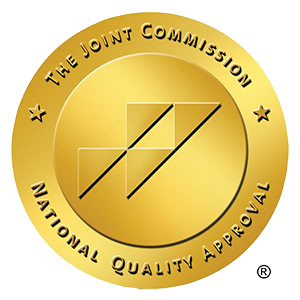While it is well known that the first step in the addiction recovery process is detox, there is often confusion as it relates to the terminology. Many people hear the words “detox” and “withdrawal” and think they are one and the same.
And, while they may be closely related, they are not interchangeable.
While withdrawals often happen during the detox process, they can continue even after detoxing has been completed. On the contrary, while detoxing involves addressing withdrawal symptoms, there are additional components as well.
In this blog, we will break down what detox and withdrawal are, take a look at each of their timelines, highlight some of the key similarities and differences when it comes to detox vs withdrawal, and explain how professional detox centers, such as Surf City Detox in Huntington Beach, California, can make the process safer, smoother, and more comfortable.

What Is Detox?
As we touched on in the intro, detox is the crucial first step in the overall treatment and recovery process. Detoxing is done in order to rid the body of the harmful substances that are in it, so the healing process can truly begin.
The goal of detoxing is simple:
- Eliminate harmful substances from the body
- Stabilize the body
- Minimize withdrawal symptoms
- Prepare for treatment
Since the detox process is often a shock to the system, treatment professionals often recommend that detoxing be done under proper medical care and supervision, otherwise known as medical detox. Medical detox not only provides access to important medical care and monitoring, but also offers access to medications that may help alleviate or even treat certain withdrawal symptoms in order to make the process more comfortable and even safer.
Medical detox can be done at a local medical facility, a dedicated detox center, or a full-service treatment center such as Surf City Detox. While detoxing from any substance of abuse can be uncomfortable, detoxing from certain substances such as alcohol, opioids, and benzos can be dangerous and even life-threatening if not done under the proper medical care and monitoring.
Detox Timeline
Now that we have gone over what detoxing is, let’s take a look at the process and timeline. It’s important to note that the timeline for detoxing can vary based on a number of factors such as:
- The type of substance used
- Duration and frequency of use
- Dosage and method of administration
- The individual’s overall health
- History of detox or relapse
Below is a typical detox timeline for some of the more common substances of abuse:

- 6 to 12 Hours After Last Drink – Early symptoms include anxiety, insomnia, nausea, abdominal pain, and mild tremors.
- 12 to 48 Hours – Symptoms intensify. Elevated blood pressure, irregular heart rate, increased body temperature, and more severe tremors may occur.
- 48 to 72 Hours – This is the window of greatest concern. Some may develop delirium tremens (DTs), a condition that causes confusion, hallucinations, seizures, and heart disturbances.
- 4 to 7 Days – Symptoms begin to stabilize. Sleep may still be disrupted, and mood swings or anxiety may linger.
- 8 to 24 Hours After Last Use – Early symptoms include muscle aches, restlessness, anxiety, watery eyes, runny nose, and excessive sweating.
- 24 to 72 Hours – Symptoms peak. Nausea, vomiting, diarrhea, abdominal cramping, dilated pupils, goosebumps, and severe cravings may occur
- 5 to 10 Days – Physical symptoms begin to subside, but psychological symptoms such as anxiety, depression, and insomnia may persist.
- 1 to 4 Days After Last Dose – Early symptoms may include anxiety, insomnia, irritability, and panic attacks.
- 5–14 Days – Withdrawal symptoms peak. This may include muscle pain, sensitivity to light and sound, hallucinations, and in some cases, seizures.
- Several Weeks to Months – Protracted withdrawal is common. Symptoms like anxiety, insomnia, and cognitive difficulties can continue for an extended period and often require long-term medical oversight.
- Within Hours After Last Use – Symptoms such as fatigue, depression, agitation, and intense cravings begin.
- 1 to 3 Days – The “crash” period peaks. People may sleep excessively, feel apathetic, and experience mood swings.
- 4 to 10 Days – Acute symptoms gradually subside. Emotional symptoms like depression or anhedonia (inability to feel pleasure) may linger.
- Several Weeks – Some users may experience ongoing psychological symptoms such as paranoia, anxiety, and persistent cravings.
While not as common, in some instances, a person may continue to experience detox-related symptoms weeks or even months after detox has been completed. This is a condition known as Post-Acute Withdrawal Symptoms (PAWS). Someone suffering from PAWS may require additional treatment, such as Medication-assisted treatment (MAT), to address these lingering symptoms.
What Is Withdrawal?
Withdrawal refers to what happens to the body both physically and psychologically once they stop using the substance or substances they are dependent on or addicted to. These symptoms occur because the brain and body have adapted to the presence of the drug and must now adjust to its absence. While withdrawal symptoms occur during the detox process, they are not exclusive to detoxing. In fact, many people begin to experience withdrawals even before they have begun detoxing.
While withdrawal symptoms and their severity can vary based on the type of substance and the amount taken, some common withdrawal symptoms include:

- Nausea
- Vomiting
- Sweating
- Shaking
- Headaches
- Muscle aches
- Fever
- Rapid heart rate
- Anxiety
- Depression
- Irritability
- Insomnia
- Cravings
- Paranoia
- Mood swings
While far less common, in some extreme cases, withdrawals may lead to serious and even potentially life-threatening conditions such as seizures, delirium tremens (DTs), and suicidal thoughts or actions.
Withdrawal Timeline

Just like with detoxing, the withdrawal timeline can vary based on the substance. Below is a typical withdrawal timeline for some of the more common substances of abuse:
- Stage 1 (6–12 Hours) – Symptoms include headache, nausea, tremors, irritability, and mild anxiety.
- Stage 2 (12–48 Hours) – Symptoms intensify with elevated heart rate, blood pressure, and temperature. Confusion and mild hallucinations may appear.
- Stage 3 (48–72 Hours) – Risk of severe complications such as seizures and DTs.
- Post-Acute Withdrawal – Anxiety, sleep problems, and mood fluctuations may continue for weeks or months, especially in chronic drinkers.
- Early Withdrawal (8–24 Hours) – Similar to a severe flu, including restlessness, muscle aches, and sweating.
- Peak Withdrawal (24–72 Hours) – Intense symptoms including vomiting, diarrhea, stomach cramps, and severe cravings.
- Late Withdrawal (Up to 2 Weeks) – Symptoms begin to lessen, but psychological distress, such as anxiety and depression, may intensify.
- Post-Acute Withdrawal Syndrome (PAWS) – In long-term users, emotional instability, low energy, and sleep disturbances can last for months.
- Early Withdrawal (1–4 Days) – Return of anxiety, insomnia, and panic that the drug was originally prescribed to treat.
- Acute Withdrawal (5–14 Days) – Risk of seizures, psychosis, and severe agitation. Tapering under medical supervision is critical.
- Protracted Withdrawal (Weeks to Months) – Lingering anxiety, depression, memory issues, and sensitivity to stress may persist.
- Crash Phase (Hours to Days) – Extreme fatigue, increased sleep, irritability, and severe depression.
- Acute Phase (4–10 Days) – Continued low mood, poor concentration, lack of motivation, and drug cravings.
- Extended Withdrawal – Mood disorders, paranoia, and craving can linger, particularly for methamphetamine users.
What Is the Difference Between Detox vs Withdrawal?
When it comes to the difference between detox and withdrawal, the easiest way to differentiate the two is to think of it this way: Detox is the process, while withdrawal is the set of symptoms that occurs during that process.
More specifically, detox is the medical process of removing toxins from the body, often done in a supervised setting, while withdrawal refers to the symptoms that often occur during the detox process after someone stops taking the substance or substances of abuse.
Below are some of the other key differences between detox and withdrawal:

Detox is the structured process of eliminating substances from the body, whereas withdrawal is the body’s response to the absence of those substances.
Detox encompasses both medical and emotional support. Withdrawal is purely the manifestation of symptoms.
Detox involves stabilization, medication, and monitoring. Withdrawal includes symptoms like sweating, tremors, irritability, and depression.
Detox typically lasts 3–10 days, depending on the substance. Withdrawal begins during detox but can continue for weeks afterward.
Detox is designed to prepare individuals for long-term treatment. Withdrawal reflects the body’s adjustment period after substance use stops.
Detox often requires clinical care. Withdrawal symptoms are managed with medications and supportive care as part of the detox process.
At Surf City Detox, We’ll Walk You Through the Detox Process
Facing detox and withdrawal doesn’t have to be a solitary or terrifying experience. At Surf City Detox, we offer a compassionate, medically supervised detox program that prioritizes your safety, comfort, and dignity.
Whether you’re detoxing from alcohol, opioids, benzodiazepines, or stimulants, we are equipped to guide you every step of the way, from the first hour of detox through stabilization and beyond.
If you or someone you know is struggling with substance use and is considering detox, don’t do it alone. Contact us today to begin your journey toward a healthier, substance-free life.

Dr. Eric Chaghouri is a 2007 graduate from the University of California, Los Angeles, where he earned his B. A. in Biology with Summa Cum Laude honors. While at UCLA, he helped the men’s varsity volleyball team earn a National Championship in 2006. He was named the UCLA Scholar-Athlete of the Year in 2007.
He earned his medical degree from the Keck School of Medicine in 2011. He completed his internship training in 2008 at Cedars-Sinai Medical Center and the remaining three years of residency in general adult psychiatry at the Los Angeles County and University of Southern California Medical Center. He served as the Chief Resident in psychiatric emergency services during his fourth year of residency. He also served as Resident Clinical Instructor and Volunteer Faculty in the Department of Psychiatry at the Keck School of Medicine.
After completing residency, Dr. Chaghouri accepted a fellowship position in forensic psychiatry at the prestigious USC Institute of Psychiatry and Law. His scholarly activities included publishing in Legal Digest and presenting research findings at the Keck School of Medicine annual conference.
Since completing his forensic psychiatry fellowship, he has established a successful and thriving practice in Southern California, focusing on treatment of co-occurring psychiatric and addictive disorders. He has developed a strong clinical team of practitioners who share similar goals and philosophies regarding psychiatric treatment, including providing cutting-edge interventional treatments for psychiatric conditions. He works in an array of capacities with attorneys, courts, and other parties in actual or potential litigation. He also has extensive experience consulting and providing opinions on psychiatric issues for major television networks. Dr. Chaghouri’s interests include addiction medicine, substance use disorders, forensic psychiatry, medical ethics, psychological autopsy, gender wellness, and evidence-based treatment of psychiatric conditions.



